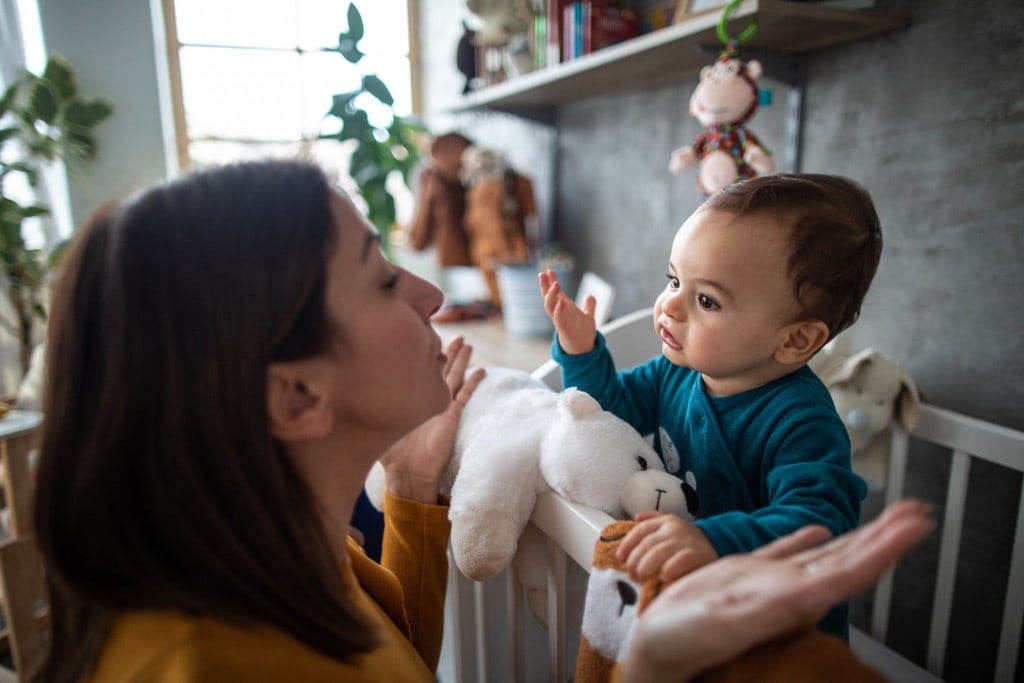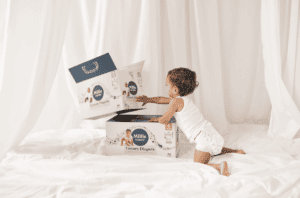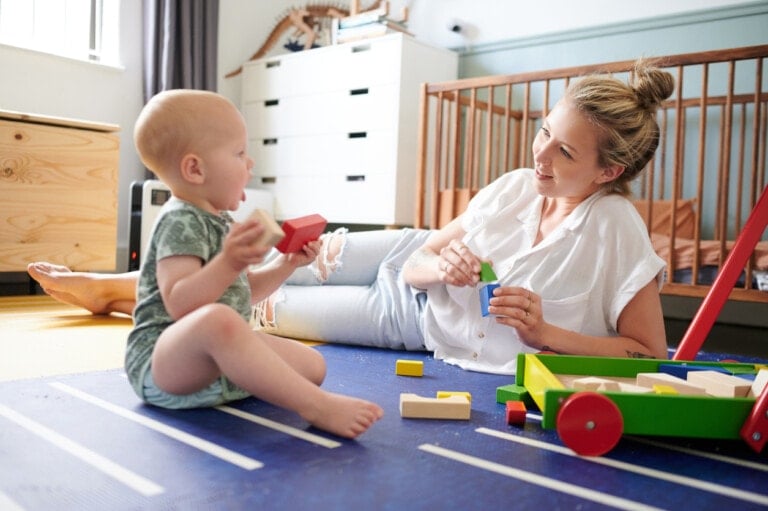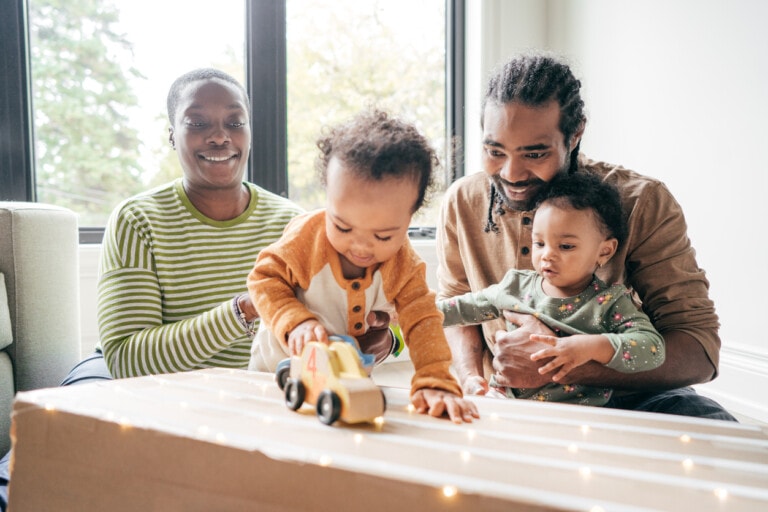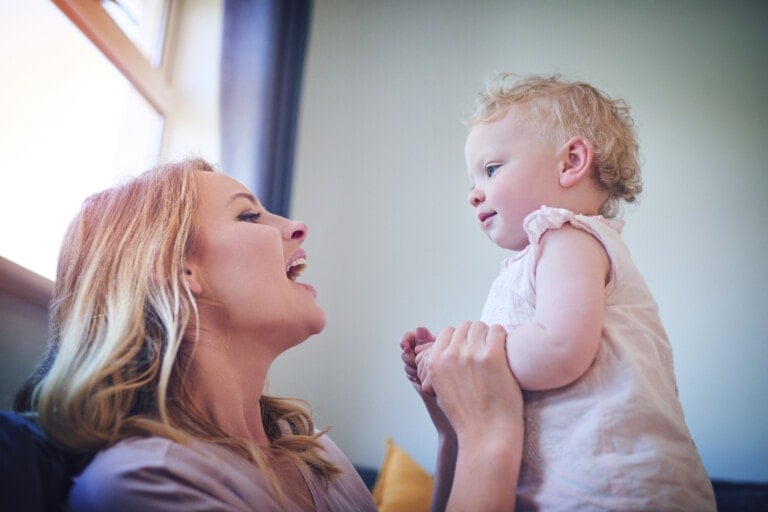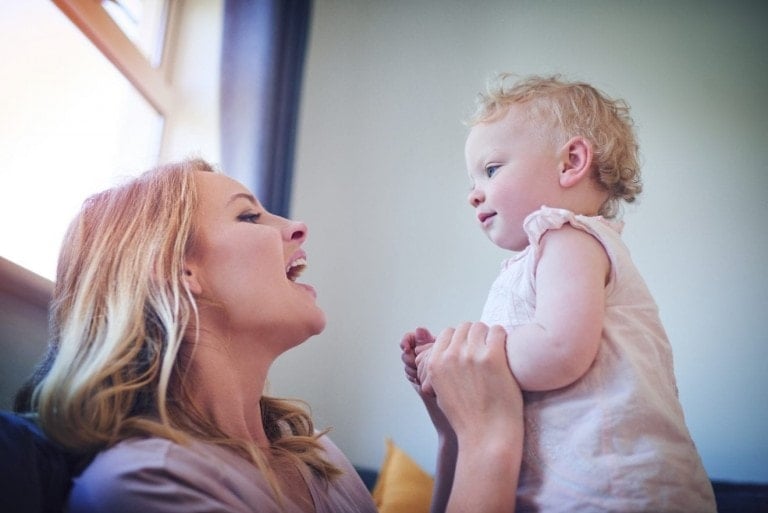We’ve all been there. You’re scrolling social media, and you see a video of your college friend’s 18-month-old talking more than your two-year-old. You start to panic that something is wrong. Take a deep breath. It’s okay! Your child is probably precisely where they need to be developmentally, but there are some things you can do to help your baby start talking.
All children develop language at their own pace. I know you’ve heard it 500 times before, but I will tell you again. Don’t compare children. “Normal” is a vast range. It’s important first to understand how children learn language skills.
Children are like sponges. They soak up everything they see and hear around them until they are full of information. The more they experience, the more they learn. The great news? There are plenty of simple concepts that you can incorporate into your everyday routine to help your baby start talking.
Ways You Can Help Your Baby Start Talking
1. Modeling
When we want our kids to say something, we tend to tell them to “say please” or “say more.” What they need is a model, not a command. We don’t want them to feel frustrated or stressed if they can’t do what we ask. Instead, try saying exactly what you want them to say so that they have the opportunity to imitate you. If they do, great! If they don’t, that’s okay! We’re not going to withhold the cookie. We’re just going to provide a model and move on. Take the pressure off and give them the chance to listen and learn.
- Instead of: “Say please,” try: “Can I please have a cookie?”
- Instead of: “Say thank you,” try: “Thank you, mama!”
- Instead of: “Say help,” try: “Help me, please!”
2. Expansion
Expansion is a great way to build on your child’s vocabulary and expose them to different language concepts. Remember, children learn language through experience, so the more they hear, the more they pick up. Take the words that your child does say during play and build off of them to create more language learning opportunities.
- Your child says: “car.” You say: “That is a car! That’s a big, blue car with small, black wheels. What does a car say? Beep! Beep!”
- Your child says: “pig.” You say: “A little pink pig on top of the barn! Oink, Oink!”
- Your child says: “bus.” You say: “That’s right! A yellow school bus!” (Insert opportunity to sing The Wheels On The Bus)
3. Narrating
You know that little narrator that lives in your head and thinks you’re the star of a Hallmark movie? Bring that narrator out and talk – about everything. We do so many daily activities around our children in silence that we can easily make a language-learning moment. Here are a few scenarios to consider:
When grabbing a snack:
Rather than grabbing a snack for your little one in silence, try this: “Mama is going to open the cabinet and get you some fruit snacks! Let’s open the bag and see how many we have. Open! Let’s count (proceed to count the fruit snacks), WOW! There are ten fruit snacks! I see a red strawberry, a purple grape, a green pear, and a yellow pineapple!
While your child is playing:
Your child is playing with the play kitchen alone while you grab a much-needed cup of hot coffee (or glass of wine) in silence. You don’t even have to move! Just talk in between sips of that life-saving goodness. “What are you making over there? Can you bring me a piece of pizza and an apple? Thank you so much! This is so yummy. Can you take this back to your kitchen and bring me a yellow banana?” In this scenario, we’re not only targeting language use but following directions, which is a big part of receptive language (understanding).
While taking a walk:
We all love listening to our podcasts during walks, but try turning it off for a block and talking about your surroundings. “What color is the sky today? Blue! What color are the clouds? White! Look at that big house and the small house next to it. How many trees do you see? I see one, two, three, four trees! What color are the leaves? Green! Let’s pick one up and see what it feels like. This leaf is smooth.” Now you can turn your podcast back on and let your kid hold the leaf for the remainder of your walk. You can feel good about the language-learning moment you just had in front of your neighbor’s house!
4. Reading
Reading books together is one of the most important things you can do to teach language to your little one. You probably already read together often, if not daily, but there are a few things you can do during storytime to make it an even better learning experience.
Sit Face to Face
Try facing your child during storytime rather than having them sit on your lap. I know we all love the storytime snuggles, but it’s essential for them to be able to watch your mouth move as you read.
Slow Down
Don’t just flip through the pages as fast as you can. Spend some time on each page and talk about the illustrations. There are a lot of opportunities to name colors, shapes, animals, emotions, etc. This is also an excellent time to work on receptive language (understanding). Can they point to specific pictures or colors that you name?
Offer a Tactile Experience
Concepts of print are an important skill that will come in handy later when they begin working on literacy skills as they learn to read. Try letting your child hold the book, flip through the pages, close the book, show you the front and back covers, and point out the words on the page.
So the solution here is simple. You must talk and teach to help your baby start talking. Language learning is a natural process. They will learn if the environment is set up for them to learn. Remember to take the pressure off and make it FUN! Try making these simple changes to your routine to add extra learning opportunities. You’ll be surprised what your little sponge soaks up!
For more information and tips on specific age groups, visit ASHA.org.













